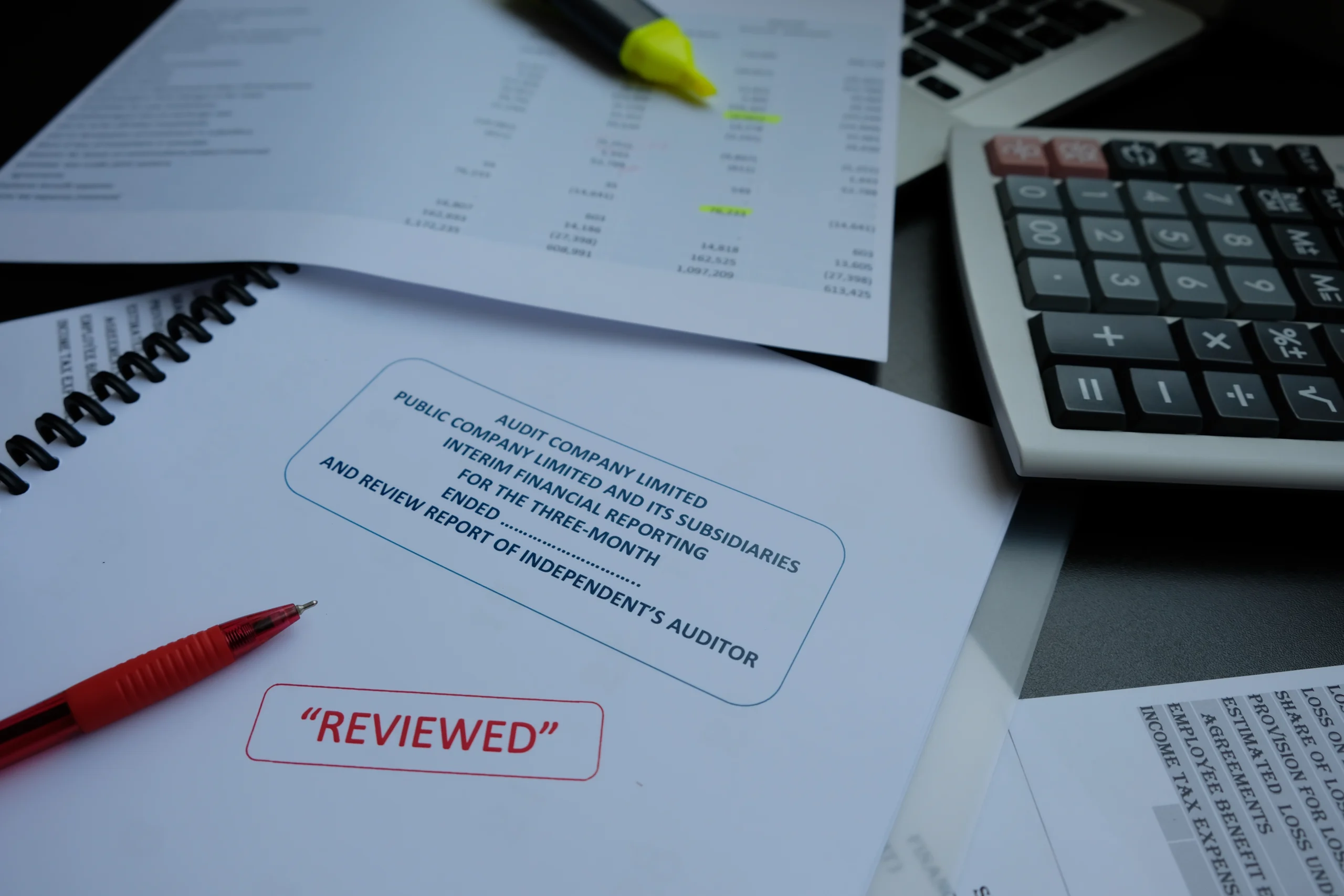Stuck with Your Spouse’s Tax Mess? Innocent Spouse Relief Could Be Your Way Out!
Finding out that you’re responsible for your spouse’s tax errors can hit an emotional and financial stress point. The thought of unexpected tax bills, penalties, and interest can feel totally overwhelming, messing with your financial future. But for many people “innocent spouse relief” isn’t just some legal term; it can be the actual financial lifeline that saves them from massive debt and endless stress.
Understanding exactly what qualifies for innocent spouse relief can save you thousands in tax liability and years of financial stress.
This special tax relief, from the IRS, is meant to save people from the tax burden of their spouse’s (or ex-spouse’s) mistakes or missing info on a joint tax return. Without knowing about this, tons of people might end up paying taxes that aren’t even theirs!
Understanding What Qualifies for Innocent Spouse Relief in 2025
If you’re asking what qualifies for innocent spouse relief, you’re not alone. Innocent spouse relief is an IRS program that helps you avoid paying tax debt caused by your spouse’s mistakes on a joint tax return. The IRS protection was created to ensure that you do not have to pay for errors that you were unaware of or from which you did not benefit.
Key Qualification Criteria
- You filed a joint tax return with your spouse or ex-spouse.
- The tax understatement happened because your spouse made mistakes, like not reporting income or claiming false deductions.
- You didn’t know, and had no reason to know, about the error when you signed the return.
- It would be unfair to hold you responsible for the tax.
The IRS refers to this as “joint and several liability”, meaning both spouses are generally responsible for the full tax amount on a joint return. But if you meet the requirements for innocent spouse relief, you can break free from that burden.
The Three Types of Innocent Spouse Relief
There are three main IRS tax liability relief options for spouses. Here’s how they compare:
| Type of Relief | Who Qualifies? | What It Covers | Key Requirements |
| Traditional Innocent Spouse | Spouses unaware of errors on joint returns | Understated tax due to spouse’s error | Must prove no knowledge or reason to know about the error |
| Separation of Liability Relief | Divorced, separated, or not living together | Your share of tax liability only | Must be divorced, legally separated, or not living together for 12+ months |
| Equitable Relief | Those who don’t qualify for the above | Understated or unpaid tax | Must show it’s unfair to hold you liable, based on all facts and circumstances |
- Traditional Innocent Spouse Relief: If you can prove you were unaware of your spouse’s error, you don’t have to pay any of the shared tax debt.
- Separation of Liability Relief: This will divide tax liability between you and your spouse on one condition: that you must be divorced, under a separation decree, or have lived apart for at least one year.
- Equitable Relief: Used when the first two don’t apply, but it would be unfair to blame you.
Key Eligibility Requirements for Traditional Innocent Spouse Relief
To claim the traditional innocent spouse relief, you must check all of the following boxes:
- You must check all of the following relevant years.
- Tax understatement is due to mistakes made by your spouse (such as underreported income or improper deductions).
- When you signed that return, you had no knowledge and no reason to know of the understatement.
- Given your situation (i.e., you lost your partner or didn’t take advantage of the mistake), it would be unfair to blame you.
Example: If your partner had a side business but didn’t note the earnings, and you were unaware, you might be eligible.
Checklist to follow:
- Joint return filed
- Understatement due to spouse’s error
- No knowledge or reason to know
- Unfair to hold you liable
Important: If you signed an offer in compromise or a closing agreement with the IRS, or if a court has already denied you relief, you’re not eligible.
Common Scenarios That Qualify for Innocent Spouse Relief in 2025
It’s common to wonder what qualifies for innocent spouse relief in real life. Here are some examples:
- Hidden income: Your spouse failed to report cash earnings from a side job, and you didn’t know about it.
- False deductions: Your spouse claimed business expenses that weren’t real, and you had no reason to question it.
- Unreported investments: Your spouse failed to report investment income, and you weren’t involved in managing those accounts.
A recent statistic shows that about 37% of innocent spouse relief requests were approved in the 2024 fiscal year, showing how important it is to submit a strong, well-documented case.
“The IRS looks at everything from the nature of the error to your financial situation, your educational background, and how much you participated in the activity that created the problem.” — IRS Publication 971
Identifying Erroneous Items on Joint Tax Returns
Erroneous items are mistakes or omissions that cause your tax liability to be understated. The IRS defines these as
- Unreported income (like cash jobs or investment income)
- Incorrect deductions or credits (claiming expenses that didn’t happen)
- Misstated property basis (overstating the value of an asset)
How to Spot Them:
- Look for income lines on your joint tax return (Form 1040, lines 1-8). Missing or low numbers could signal unreported income.
- Check Schedule A for questionable deductions.
- Review any attached business schedules for suspicious expenses.
Warning Signs:
- Your spouse insists on handling all finances.
- You’re asked to sign returns without reviewing them.
- There are unexplained deposits or withdrawals in joint accounts.
Documentation Needed to Prove Qualification
“To get innocent spouse relief, you need strong proof. Here’s what you’ll need to show.”
- The mentioned years’ tax returns
- 1099s, W-2s, and other income statements
- Bank statements indicating your income and expenditure
- Letters, emails, or text messages between you and your spouse regarding money
- Decrees of divorce or separation agreements (where any exist)
- The statement of a family, friends, or professional witnesses
- Evidence of abuse or duress (if relevant)
Tip: Start collecting these documents as soon as you suspect an issue. The more organized your records, the stronger your case.
The Innocent Spouse Relief Application Process in 2025
Applying for innocent spouse relief involves several steps. Here’s a simple breakdown:
- Apply: Complete IRS Form 8857 (Request for Innocent Spouse Relief).
- Submit: Mail or fax Form 8857 to the IRS.
- IRS Review: The IRS will notify your spouse or ex-spouse and start reviewing your case.
- Provide Documents: Respond to any IRS requests for more information.
- Decision: The IRS will send a determination letter.
Estimated Timeline: As of 2025, the average processing time is 4–6 months, thanks to recent improvements at the IRS.
How to Complete IRS Form 8857 Correctly
Filling out Form 8857 can be tricky, but here’s how to get it right:
- Section I: Personal information—double-check for accuracy.
- Section II: List the years you’re requesting relief for.
- Section III: Explain why you’re seeking relief. Be honest and detailed.
- Section IV: Provide information about your spouse’s errors.
- Attach documentation: Include copies of tax returns, financial records, and any supporting evidence.
Common Mistakes to Avoid:
- Leaving sections blank
- Failing to provide enough detail
- Not attaching the required documents
Expert Tip: If you’re unsure about any part of the form, consider consulting an innocent spouse relief lawyer for guidance.
Timeline and Expectations After Filing for Relief
This is what will happen after you have sent your application:
- IRS Acknowledgement: You will get an acknowledgement letter on your application.
- Spouse Notification: IRS will release the notification to your spouse or ex-spouse.
- Review Period: The IRS reviews your case for 4-6 months starting in 2025.
- More Info: The IRS can request further documents.
- Request for More Info: You will get a letter explaining the IRS’s decision.
- Decision Letter: You will get a letter explaining the decision from the IRS.
If your request is denied, you have the right to appeal.
When to Consult an Innocent Spouse Relief Lawyer in 2025
There are times when working with an innocent spouse relief lawyer is especially helpful:
- Your case involves large sums of money or complex finances.
- There’s a history of abuse or intimidation.
- You’re unsure about the documentation required.
- The IRS has denied your claim before.
A qualified innocent spouse relief lawyer can help you gather evidence, prepare your application, and represent you in communications with the IRS.
How an Innocent Spouse Relief Lawyer Improves Your Chances of Success
The chances of an approval significantly increase when legal representation undertakes the following actions:
- By making sure that your documentation is great and structured
- Knowledge of the tax court decisions and IRS news
- Negotiating with the IRS on your behalf
As per the industry statistics, more applicants with legal assistance have higher chances of success than those who undertake assistance themselves.
“Our tax attorney will promote and defend your rights every step of the way to see that you aren’t held responsible for unjust tax liabilities.” — Ramy Shabana, Tax Relief Counsel
Questions to Ask When Hiring an Innocent Spouse Relief Specialist
When searching for the right professional, ask:
- How many innocent spouse relief cases have you handled?
- What’s your success rate?
- Are you familiar with the latest IRS updates and court rulings?
- Will you help me gather and organize my documentation?
- What are your fees and payment options?
Notice the Red Flag: Avoid attorneys who guarantee approval or ask for large upfront fees.
Factors That May Disqualify You From Innocent Spouse Relief
Not everyone qualifies. Here are some common disqualifying factors:
- You knew or had reason to know about the tax error.
- You benefited significantly from the understated tax.
- You participated in a fraudulent scheme.
- You signed an IRS offer in compromise or closing agreement for the same tax year.
For example, if you helped hide income or spent money that you earned but did not report, the IRS is unlikely to grant relief.
Addressing Potential Disqualifying Factors in Your Application
If you’re worried about disqualification:
- Be upfront about your involvement.
- Provide evidence of mitigating circumstances, like abuse or duress.
- Show you didn’t benefit from the error.
- Include witness statements or expert opinions.
A strong, honest application can sometimes overcome borderline issues.
Alternatives If You Don’t Qualify for Innocent Spouse Relief
If you don’t meet the requirements for what qualifies for innocent spouse relief, other IRS tax debt relief options for spouses may be available:
| Relief Option | Who Qualifies? | What It Does |
| Installment Agreement | Anyone with tax debt | Let you pay off debt over time |
| Offer in Compromise | Those unable to pay the full debt | Settle for less than the full amount |
| Currently Not Collectable | Those in financial hardship | Temporarily halts IRS collection efforts |
These programs have their requirements and application processes. If you’re not sure which is right for you, I can help you evaluate your options.
Other IRS Hardship Programs for Tax Debt Resolution
- Installment Agreements: Spread your payments out over time.
- Offer in Compromise: Settle your tax debt for less than you owe.
- Currently Not Collectable Status: If you can’t pay at all, the IRS may pause collection.
Each program has its eligibility checklist, so review your situation carefully.
Success Stories: Winning Innocent Spouse Relief Cases
Here are a few anonymized stories from my experience at the Halls IRS:
- Case 1: A client’s ex-husband failed to report $50,000 in freelance income. She provided bank statements and emails proving she had no knowledge of the earnings. The IRS granted full relief, saving her over $20,000 in back taxes and penalties.
- Case 2: After a difficult divorce, a client discovered her spouse had claimed false business expenses. With detailed documentation and a strong narrative, she received separation of liability relief, reducing her tax bill by 70%.
Recent Tax Court Rulings on What Qualifies for Innocent Spouse Relief
Recent legal decisions have changed the landscape for what qualifies for innocent spouse relief:
- Smith v. Commissioner (2024): Expanded qualification for economic hardship cases, making it easier for some applicants to qualify.
- IRS Update (April 2025): New Form 8857 documentation requirements—be sure to use the latest version.
- Statute of Limitations (March 2025): Clarified rules for older tax returns, so check deadlines carefully.
How Tax Court Precedents Are Changing Qualification Standards
Relief is now easier to get for hardship or abuse cases. Good proof and legal help can improve your chances, even if you were denied before.
Conclusion:
What qualifies for innocent spouse relief can be complex, but with the right knowledge and support, you can protect yourself from unfair tax liabilities. If you’re dealing with IRS tax issues caused by your spouse’s mistakes, don’t wait; timely action is critical.
Contact me, Tina Hall, at Halls IRS in Swainsboro, GA, for a confidential consultation. As an experienced innocent spouse relief professional, I’m here to help you gather the right documents, complete Form 8857, and fight for your financial future. Call (478) 455–4615 today.
FAQ's
The complicated cases are not an exception, and the actual processing can take 4–6 months on average. The IRS will inform you when it comes to the process.
Yes, you can still qualify even if you’re married, as long as you meet the other requirements. However, some relief types (like separation of liability) require you to be divorced or separated.
In most cases, you should claim within two years of the IRS’s initial effort to collect the tax. There are some exceptions to this rule, especially regarding equitable relief.
It may remove the liability tax and its penalties and interest, but only for the debt caused by your spouse’s error.
In rare cases, the IRS may gradually reassess or rescind relief if new facts emerge or if it is discovered that the initial application was fraudulent. Nevertheless, it has safeguards against those who have acted in good faith.








